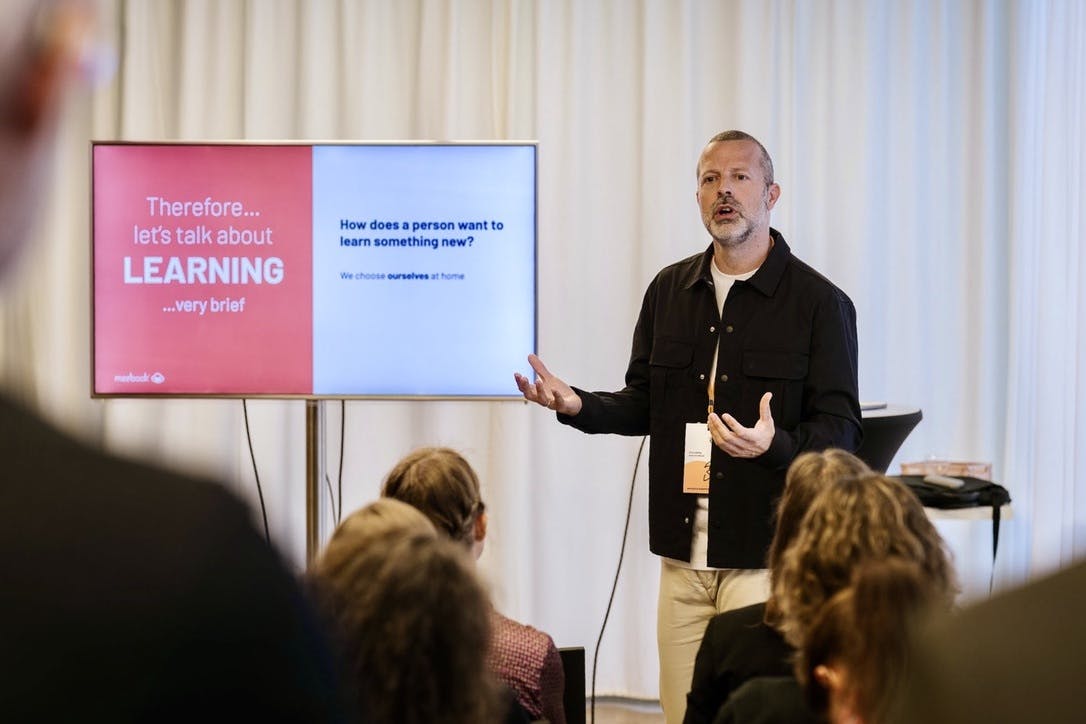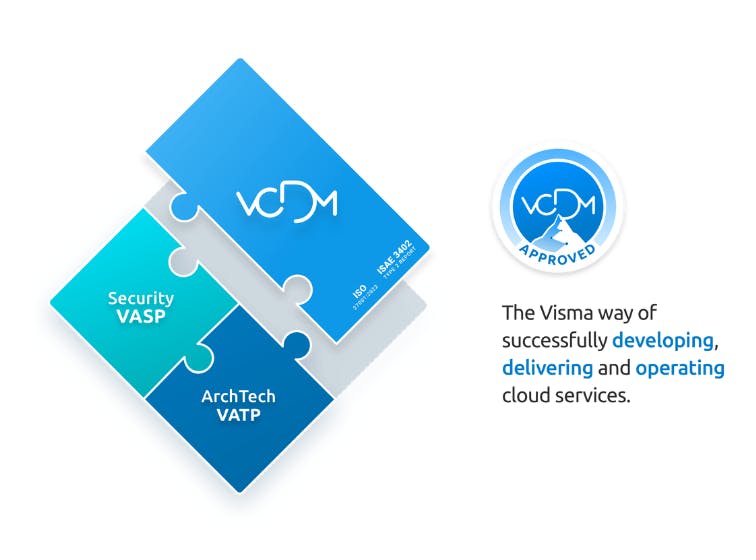Article
AI for leaders: A practical guide
13/6/2025
min read
AI

The rise of Artificial Intelligence (AI) and Large Language Models (LLMs) like Gemini and ChatGPT is rapidly transforming the business landscape. Authored by T. Alexander Lystad, CTO of Visma, this guide offers leaders practical advice on adopting and leveraging these tools as essential co-pilots for navigating daily tasks and strategic challenges.
For leaders, these tools are no longer a novelty but increasingly essential co-pilots for navigating daily tasks and strategic challenges. This guide, inspired by a workshop I created for Visma leaders, offers practical advice on how to adopt and leverage LLMs effectively in a leadership role (although much applies to non-leaders as well!)
Harnessing LLMs for high-value leadership tasks
LLMs can be powerful allies in numerous leadership functions.
Deep research
Think of this as commissioning a week's worth of research and a summary report, condensed into 5-15 minutes. LLMs can conduct market or company research, compare products/technologies, and identify relevant trends using information discoverable via search engines. For best results, provide ample context, ask multiple models in parallel, and be prepared to post-process the often verbose reports (e.g., summarise for a specific audience or extract key actions).
Example prompt: Analyse the key disruptive technologies emerging in the <your specific industry, e.g., B2B SaaS> sector. What are their potential impacts over the next 3-5 years, and what strategic opportunities or threats do they present for established companies like ours? Focus on actionable insights.
Summarisation
Quickly grasp the essence of news articles, academic papers, industry reports, or even board decks. Be specific about the desired perspective, style, format, and target audience for the summary.
Example prompt: Summarise the attached 50-page industry trend report <or paste text/link> into a concise one-page executive brief. Highlight the top 3 most critical trends for our business, the key opportunities, potential risks, and suggest 2-3 immediate strategic questions our leadership team should discuss.
Writing assistance
Overcome the blank page. LLMs can help create outlines, draft content from first principles or existing material, and refine intros, conclusions, or headlines. I like to write a lot myself to ensure the content remains authentic and personal, but AI is great for suggesting an outline, expanding on your own bullet points, or filling in a missing hole in an article, for example.
Example prompt: Suggest an outline for an article explaining the imperative and efficacy of investing in AI upskilling of developers.
Preparing for meetings and interviews
Enhance your preparation for vendor meetings, internal discussions, job interviews, or press engagements. Use AI for brainstorming and input, but always lean on your personal experience and judgment.
Example prompt: Help me prepare for a meeting with strategic partner <company> about <initiative>. My key objectives: <Objective 1, e.g., Assess strategic fit>, <Objective 2, e.g., Understand their tech capabilities>. Provide a concise brief on <company> (recent relevant innovations, market position, key partnerships). Provide 3 sharp questions to ask them regarding their capabilities, resource commitment, and strategic alignment for this initiative. Anticipate 2-3 challenging questions they might ask us, with suggested concise response strategies.
Critiquing plans and strategies
Get an AIs second opinion on plans, strategies, analyses, and other documents. Ask it to evaluate technical soundness, realism of timelines, or alignment with company principles. A powerful technique that can be used for any prompt and use case is to ask the LLM to critique its own answer and then improve upon it.
Example prompt: Review the attached <e.g., marketing plan for new product X>. From the perspective of a skeptical board member, identify the 3 strongest arguments in its favor and the 3 most significant weaknesses or potential pitfalls. What critical assumptions are being made, and what data would be needed to validate them? Suggest 2 alternative approaches to mitigate the identified risks.
Data analysis
Explore datasets, identify insights, answer data-based questions, and get help cleaning, structuring, or presenting data.
Example prompt: Attached is a CSV file of our quarterly customer satisfaction survey results, including quantitative scores and free-text comments. Analyse this data to identify the top 3 drivers of customer dissatisfaction and the top 3 drivers of satisfaction. What are the key themes emerging from the qualitative comments, and are there any correlations between specific customer segments and their feedback? Present findings as a short summary with 3 actionable recommendations.
 Generated by ChatGPT o3 based on the article contents
Generated by ChatGPT o3 based on the article contents
Optimising your interactions: Prompts and techniques
Picking the right model
Different models excel at different tasks. Some are generalists, others shine in creative writing or nuanced communication (high EQ), and some are optimised for speed or handling massive amounts of text (context) or advanced coding. For instance, OpenAIs GPT-4.5 is noted as a balanced generalist with high EQ, while Google's Gemini 2.5 Pro can handle massive context and excels at deep reasoning.
System prompts
Set the stage for your conversations by providing context, defining roles, communication style preferences, and other relevant background information.
Example prompt: I'm <your name>, the <your role> of <your company>. You're my expert assistant. I prefer concise and direct language. I prefer concise and direct language. I like hero tables. Think step by step. Ask questions if you need more information to do a good job. Don’t be afraid to challenge me and any assumptions I make.
Golden prompts
Develop, evaluate, and refine sophisticated prompts to automate specific, recurring tasks. These can be used manually on demand or form the basis of AI agents. Providing successful examples within the prompt (few-shot prompting) can significantly boost quality.
Example prompt (3 paragraphs): Assume the persona of an expert Sales Development Representative at <your company>, tasked with drafting a concise, engaging, and persuasive follow-up email to <client> of <company>. This email follows an initial meeting and aims to reinforce key discussion points, reiterate how your solution addresses their specific pain points and aligns with their interests, and clearly propose the next step. To achieve this, you will utilise specific inputs: <key discussion points> for context; <pain points> and <expressed interests> for deep personalisation; <proposed solution> and <value proposition> to showcase relevant benefits; and <next steps> to guide the call to action. The email will be signed off with <your name>, <your title>, and <your company>.
Craft a compelling, personalised subject line of approximately 7-10 words, including <client name> or <company name> and hinting at a key benefit or the purpose of the follow-up. The email should begin with a warm, personalised opening that directly references the recent conversation and a specific aspect of the <key discussion points> to establish immediate relevance. The main body, in 2-3 short, value-driven paragraphs, must empathetically acknowledge their <pain points> and clearly explain how <proposed solution> and its <value proposition> directly address these specific pain points and align with their <expressed interests>, focusing on tangible benefits and outcomes for them.
Conclude with a single, clear, and actionable call to action based on the <next steps>, making it easy for <client name> to respond. The entire email should maintain a professional, respectful, confident, and client-centric tone, using clear, direct, and concise language in an approachable style, ideally between 100 and 150 words. Adhere to standard business email format. Crucially, avoid sounding generic, making assumptions not supported by the provided inputs, using overly aggressive sales language, including multiple or unclear CTAs, or significantly exceeding the specified word count. The personalisation driven by the inputs is paramount for success.
Meta prompting
Take your prompting to the next level by using AI to help you create new and better prompts for various applications, including system prompts or golden prompts.
Example prompt: I need to develop a highly effective 'golden prompt' that our sales team can use to quickly generate personalised follow-up email drafts after a first client meeting. This prompt should take key inputs like client name, company, discussed pain points, expressed interests, and proposed next steps. It should then output a concise, engaging email draft that reinforces our value proposition and encourages moving to the next stage. Research best practices for persuasive sales email writing and LLM prompt engineering for personalisation. Then, design this optimal 'golden prompt' for me.
Navigating pitfalls: How LLMs will fail you
While powerful, LLMs are not infallible. Understanding their limitations is key to mitigating risks:
- Getting lost in conversation: LLM performance can degrade in multi-turn conversations. Try to keep conversations focused and minimise the number of turns (prompt + response) – safest is 1 turn, with risk increasing after 3-4 turns. If an LLM seems confused, consolidate your conversation into a single new prompt and start a new conversation.
- Answering the unanswerable: LLMs may provide an answer even if the question is outside their capabilities or based on flawed premises. Don’t trust them for divination or predictions beyond their scope.
- Confident inaccuracy (hallucinations): AI can be confidently, authoritatively, and repeatedly wrong. It might hallucinate answers if it cannot access data or encounters errors. Always critically evaluate AI-generated information and do not automatically trust its answers.
- Sycophancy: LLMs may agree with opinions stated in your prompt, even if those views contradict known facts or their own initial outputs. Frame questions neutrally and avoid leading the LLM with strong personal opinions to get more objective responses.
- Sensitivity to prompt changes: Even subtle alterations in prompt wording, punctuation, or formatting can significantly impact an LLMs output and performance. If a prompt isn't working as expected, try rephrasing it slightly.
What can you share?
Before inputting any information into AI tools, it's crucial to be thoroughly familiar with your own organisations data-sharing policies and any relevant data processing agreements. Always exercise caution when handling confidential company information, such as internal strategies, financial details, or proprietary source code. Be especially vigilant with Personally Identifiable Information (PII), ensuring any use strictly adheres to your company’s guidelines and all applicable privacy regulations. A critical point of attention is customer data: this should never be shared with AI platforms unless your customer contracts and internal company policies explicitly permit such use. Always clarify your company's specific stance and policies before sharing any type of sensitive information with AI tools.
The path forward
AI and LLMs offer immense potential for leaders to enhance their productivity, strategic thinking, and decision-making. By understanding their capabilities, employing smart prompting techniques, and being mindful of their limitations, you can effectively integrate these tools into your daily work. If you haven't already, start experimenting and stay curious because the tools and techniques of today may change rapidly.

About the episode
T. Alexander Lystad
Alexander is Chief Technology Officer at Visma. Since joining in 2012, he has established a mature foundation based on DevOps, public cloud, and continuous delivery to improve engineering performance. His current priority is leveraging this foundation and AI to transform both how Visma does product development and what kind of products Visma is able to offer its customers.
AI
Voice of Visma
Welcome to the Voice of Visma podcast, where we sit down with the business builders, entrepreneurs, and innovators across Visma, sharing their perspectives on how they scale companies, reshape industries, and create real customer value across markets.
T. Alexander Lystad
Alexander is Chief Technology Officer at Visma. Since joining in 2012, he has established a mature foundation based on DevOps, public cloud, and continuous delivery to improve engineering performance. His current priority is leveraging this foundation and AI to transform both how Visma does product development and what kind of products Visma is able to offer its customers.





















































































































































































































